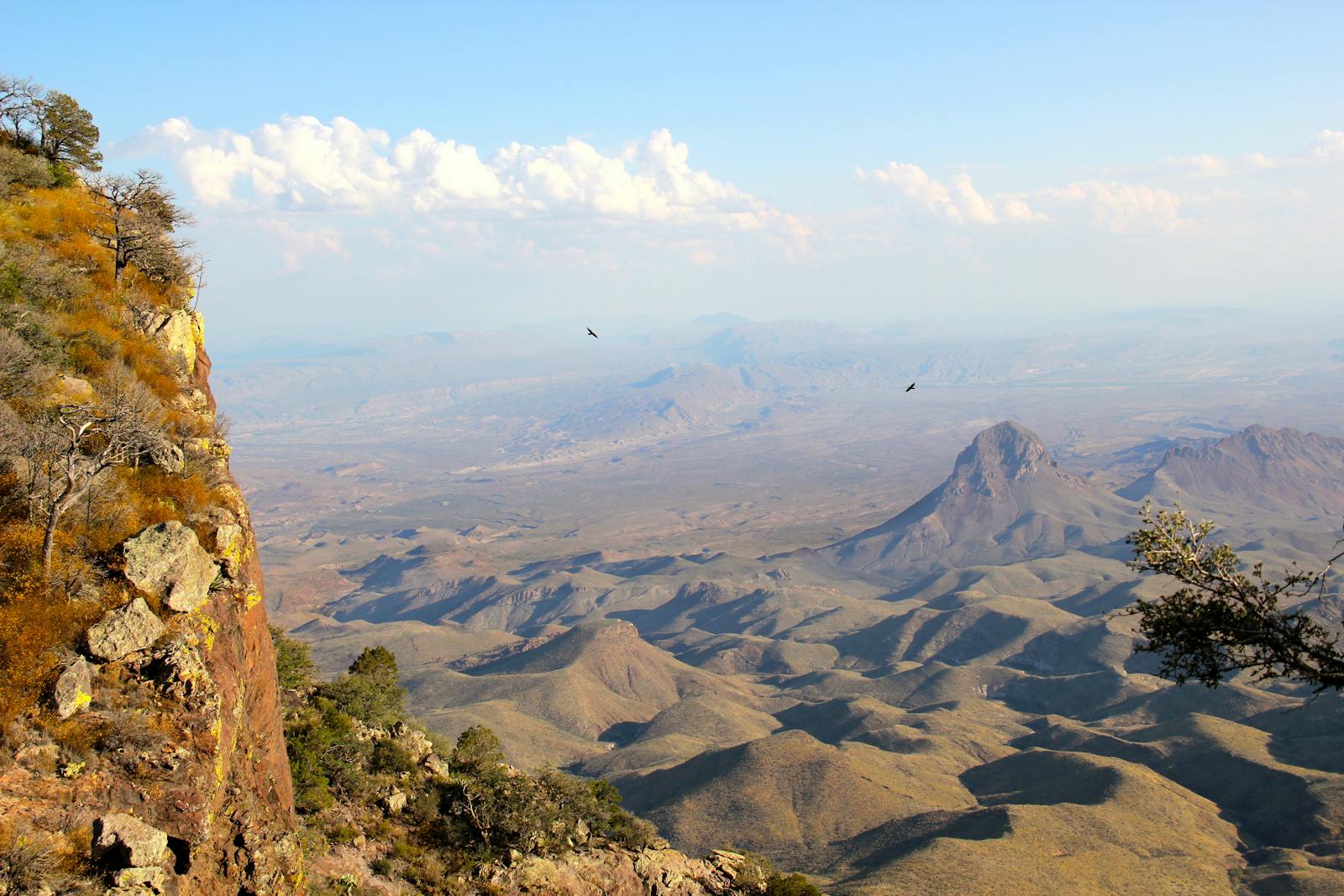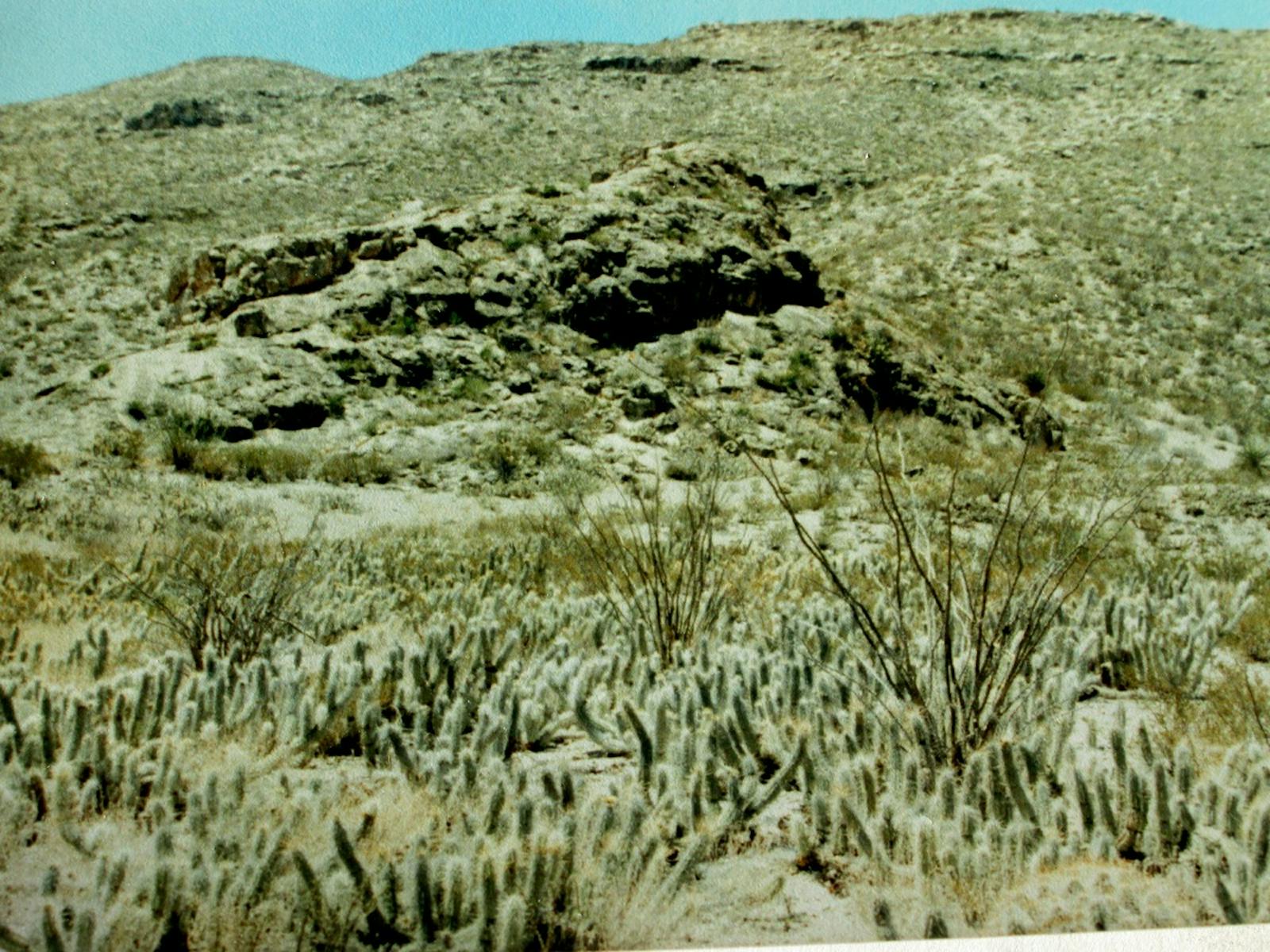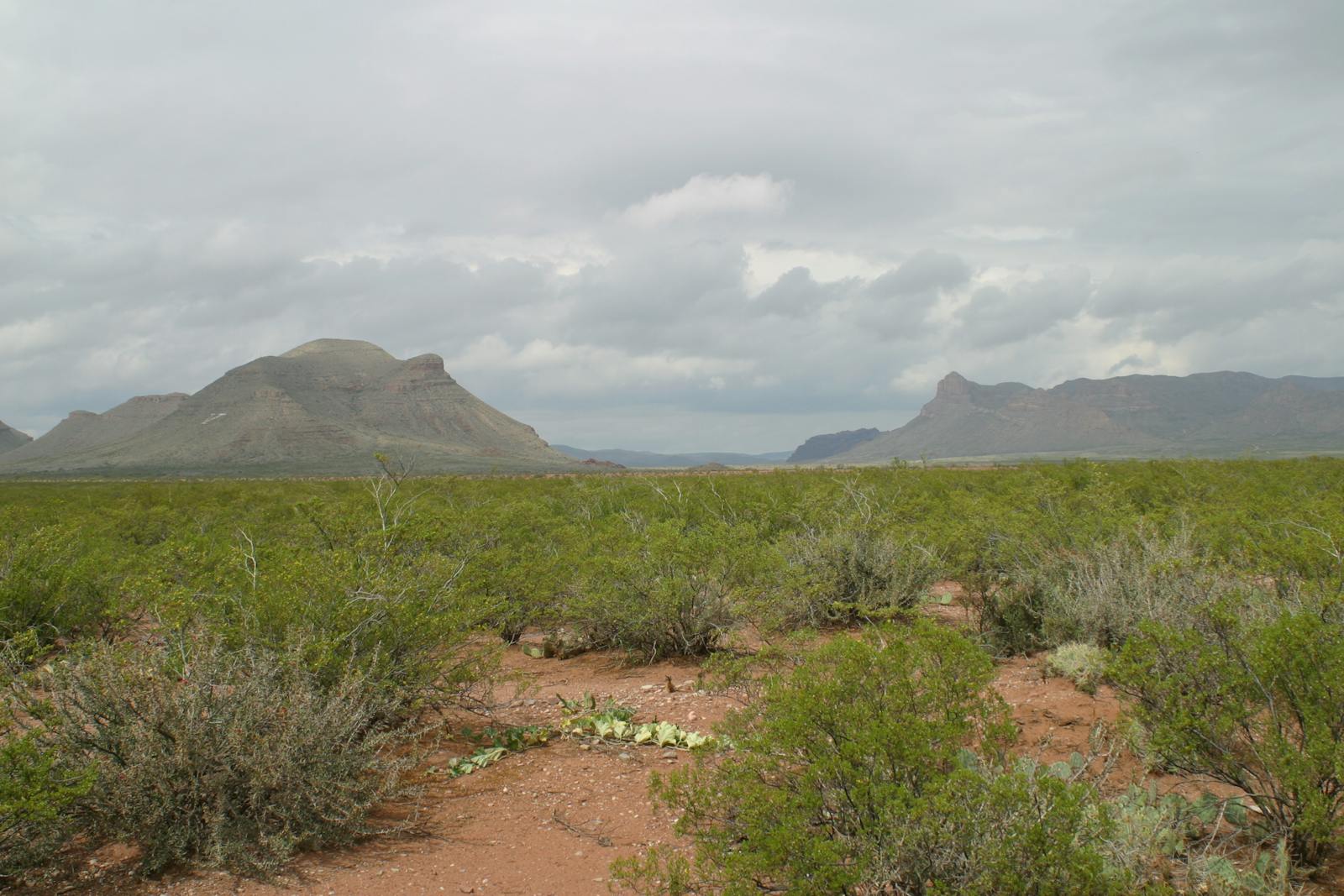Chihuahuan Desert
The ecoregion’s land area is provided in units of 1,000 hectares. The conservation target is the Global Safety Net (GSN1) area for the given ecoregion. The protection level indicates the percentage of the GSN goal that is currently protected on a scale of 0-10. N/A means data is not available at this time.
Bioregion: Sierra Madre Forests & Mexican Drylands (NA29)
Realm: Northern America
Ecoregion Size (1000 ha):
50,362
Ecoregion ID:
428
Conservation Target:
63%
Protection Level:
1
States: United States: AZ, NM, TX. Mexico: Chihuahua, Durango, Coahula, Nuevo Leon
The Chihuahuan Desert, the largest and most biologically diverse North American desert, is a mostly high-elevation, warm temperate to subtropical desert that sprawls across southeastern Arizona, southern New Mexico, much of western Texas, and north-central Mexico.
The ecoregion is bounded on the west by the Sonoran Desert, on the north by the Arizona Mountain Forests, Colorado Plateau Shrublands, and Western Shortgrass Prairie, on the east by the latter and the Edwards Plateau Savanna, Sierra Madre Oriental Pine-oak Forests, and Tamaulipan Mezquital, and on the south by the Meseta Central Matorral. Mexican wolves were once relatively common and may be again if reintroduction efforts are successful.
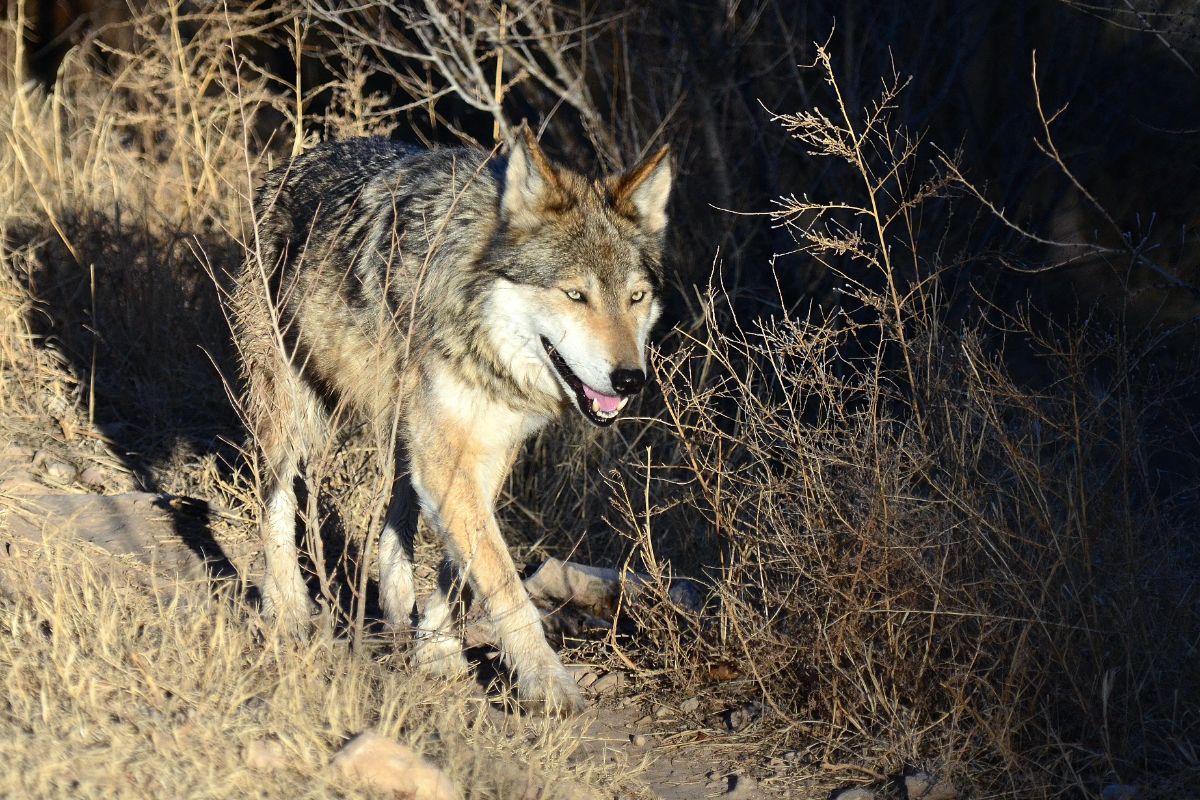
The flagship species of the Chihuahuan Desert ecoregion is the Mexican wolf. Image credit: Larry Lamsa, Creative Commons
Most of the region lies between 1,100 and 1,500 m, with some elevations up to 2,000 m and as low as 400 m along the Rio Grande. Limestone bedrock dominates much of the region, with gypsum and igneous rocks in some areas. Dunes of brilliant white gypsum are distinctive of the Chihuahuan Desert, with the largest expanse of such dunes on Earth at White Sands National Monument in New Mexico.
Other key protected areas include Las Cienegas National Conservation Area (NCA), Buenos Aires National Wildlife Refuge (NWR), Chiricahua National Monument, Leslie Canyon NWR, San Pedro River NCA, Bosque del Apache NWR, Big Bend National Park, Parque Nacional Cañon de Santa Elena, and Reserva de la Biosfera Mapimi.
Due to its higher elevation, the Chihuahuan Desert is generally cooler and moister than other warm desert ecoregions, with a climate ranging from warm temperate to subtropical and with annual rainfall averaging 235 mm. This mild climate, combined with the limestone substrate, produce much more grassland than in the other warm deserts.
The dominant grasses include bush muhly, blue grama, tobosa, and in the bottomlands, big sacaton, a tall grass that might have led enthusiastic Spanish explorers to report grasses “belly high to a horse.” Characteristic shrubs include creosote bush, tarbush, mesquite, and acacia, with more cacti in the Mexican portion of the ecoregion. Particularly conspicuous plants include soaptree yucca, desert prickly pear cactus, sotol, and lechuguilla (an agave).

Creosote Larrea tridentata. Image credit: Creative Commons
Eight primary types of scrub and woodland vegetation have been classified in the ecoregion: Chihuahuan Desert Scrub (which covers about 70% of the ecoregion), Lechuguilla Scrub, Yucca Woodland, Prosopis-Atriplex Scrub, Alkali Scrub, Gypsophilous Scrub, Cactus Scrub, and Riparian Woodland, with each of these types subdivided further.
The Chihuahuan Desert and the neighboring Sonoran Desert have the highest species richness of birds in the U.S. and northern Mexico, with some characteristic species including greater roadrunner, curve-billed thrasher, crissal thrasher, scaled quail, Scott’s oriole, and zone-tailed hawk. Lizards whose distribution are centered in the Chihuahuan Desert include Texas banded gecko, reticulated gecko, greater earless lizard, several species of spiny lizards, and marbled whiptails. Two other species of whiptails are composed entirely of parthenogenetic females.
The gypsum sand dunes at White Sands National Monument include endemic pale species or subspecies adapted to the substrate—the bleached earless lizard and little white whiptail. Snakes include the Trans-Pecos rat snake, Texas black-headed snake, and whipsnakes.
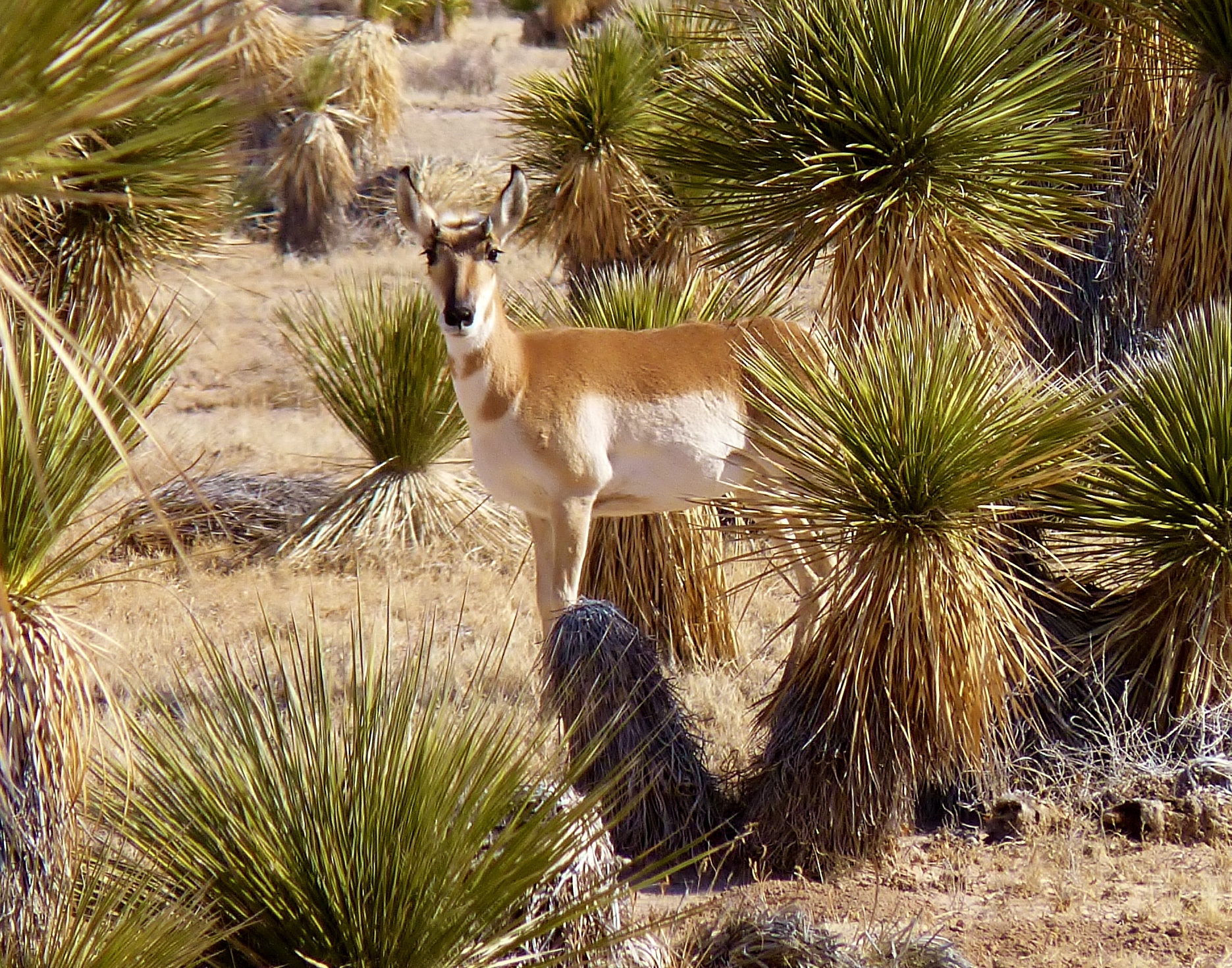
Pronghorn and lechuguilla. Image credit: Creative Commons
Mammals include pronghorn, collared peccary (javelina), jaguar, desert cottontail, and kangaroo rats. Invertebrate diversity is high, especially among groups such as grasshoppers and ants. Among the odd invertebrates are the blister beetle, tarantula hawk (a wasp), and the giant vinegarone (a whip scorpion that sprays a vinegar-smelling liquid when disturbed).
Urban sprawl is a serious threat in the vicinity of major cities. Off-road vehicles and exotic species invasions are problematic throughout. Overgrazing by cattle has been the primary cause of serious ecological degradation. Non-native invasive species such as bullfrogs, Mediterranean gecko, green sunfish, and buffelgrass are also a threat to the wildlife in this ecoregion, especially for amphibians and reptiles.
Priority conservation actions for the next decade are to: 1) greatly increase the network of protected areas across the ecoregion and reduce urban sprawl by providing disincentives to continued population growth and development; 2) prohibit use of off-road recreational vehicles and reduce cattle grazing on public lands; and 3) control invasive exotic species and minimize their impact on native wildlife.
Citations
1. MacMahon, J.A. 2000. Warm deserts. Pages 285-322 in M.G. Barbour and W.D. Billings, eds. North American Terrestrial Vegetation, 2nd edition. Cambridge University Press, Cambridge, U.K.
2. MacMahon, J.A. 1997. Deserts. Alfred A. Knopf, New York.
3. Ricketts, T.H. et al. 1999. Terrestrial Ecoregions of North America: A Conservation Assessment. Island Press, Washington, D.C.
